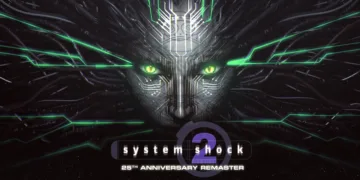Two young women, caught in the maze of modern disillusionment, decide to abandon a familiar, suffocating existence. In a modest U.K. town, where quiet desperation mingles with adolescent restlessness, these immigrant teens break away, seeking something that promises freedom but may hide peril (a risky bet, indeed).
Their impulsive decision to leave for Turkey and the borderlands ignites a narrative charged with conflicting emotions—a search for personal identity set against a backdrop of systemic marginalization.
The film unfolds at a time when the struggles of Muslim youth in Western settings have become a stark reality, marked by prejudice and exclusion. Such a socio-political climate casts long shadows over their quest, with the lure of radical ideas acting as a dangerous siren call.
Director Nadia Fall, whose theatre roots are evident in the careful staging of each scene, fashions a work that oscillates between youthful exuberance and the weight of impending tragedy.
The title itself, Brides, suggests a ritualistic passage—an invitation to sacrifice and transformation forced upon these young lives by circumstances beyond their control (a metaphor that sparks both pity and dark amusement). This introduction sets a reflective tone, inviting viewers to question the cost of seeking escape in a fractured world.
Faces of Resistance and Reflection
Doe emerges as a quiet force, a young immigrant from Somalia whose reserved nature hides a torrent of inner struggles. Raised amid constant reminders of difference—racial slurs in school corridors, the subtle cruelty at home—her piety serves both as armor and as a window into her vulnerability (one might call it a fragile defiance). Her demeanor, restrained yet simmering, reflects the heavy cost of unrelenting external pressures.
Muna, on the contrary, storms onto the screen as a British teen of Pakistani descent, unapologetically bold in her approach to life. Her outspoken manner and impulsive decisions mark her as a figure determined to mask deep-seated pain with a veneer of defiant energy. While Doe’s reticence speaks volumes through silence, Muna’s words and actions provide a stark, if volatile, counterpoint (a dynamic that sparks unexpected moments of dry humor amid the tension).
The interaction between these two protagonists is a study in contrast. Their differences generate friction, sparking instances of conflict that, in turn, lead to unforeseen moments of personal insight. The tension between quiet reflection and fiery impulsivity creates a sort of kinetic balance—each girl challenges the other in ways that shift the narrative’s emotional weight.
Supporting figures, such as Doe’s conflicted yet caring mother and the occasional mysterious stranger encountered along the way, serve as brief, poignant markers of the environment that has molded them. These peripheral characters, while not given the same screen time, contribute to a broader mosaic of influences—each encounter echoing societal tensions and familial struggles.
Throughout the unfolding events, flashbacks punctuate the present narrative (a technique that many might call “memory shards”), shedding light on the scars and triumphs that shape their identities. Their evolving relationship reflects a gradual acceptance of shared burdens and a subtle resistance to the forces that have long confined them.
Intersections of Movement and Memory
The film employs a road trip as a structural device that propels both physical relocation and an internal reckoning. The initial departure from a stifling home environment sets a tone of defiant escape—a move that is as much about leaving behind the familiar as it is about confronting inner dilemmas.
The physical route—from a quaint U.K. town through the bustling corridors of Turkey to the uncertain thresholds of a border—mirrors the characters’ shifting states of mind. Each segment of the journey functions as a chapter in their internal narratives, punctuated by unexpected hurdles such as missing contacts and logistical setbacks that force abrupt changes of plans.
Flashbacks are interlaced throughout the present timeline, acting like fragmented mirrors that reflect the protagonists’ hidden pasts. These retrospective scenes are more than simple backstory; they serve as keys to unlock layers of personal history and cultural imprint.
At times, the alternation between memory and current events produces a rhythm that can feel irregular (a sort of erratic heartbeat) but ultimately enriches our grasp of the characters’ motivations. There is a risk, however, that this switching might disrupt a steady flow of tension—yet it also cultivates moments of poignant insight.
Key turning points—such as the sudden loss of money and passports, and moments when internal conflicts flare in the face of external pressures—act as catalysts for transformation.
The narrative’s momentum escalates as the duo nears their uncertain destination, and the mounting stakes evoke reflections on the price of freedom and the quest for a meaningful identity. Scenes shift rapidly; sometimes the pace is swift, other times measured, echoing the unpredictable nature of both the physical trek and the inner voyage of self-discovery.
Crafting a Vision: Direction, Cinematography, and Production
Nadia Fall exhibits a storytelling approach marked by a deliberate contrast between wry humor and unyielding drama. Her theatrical background informs each scene, drawing out subtle nuances in the performances of her young leads (a skill that often leaves one wryly impressed).
She orchestrates moments with an eye for the unsaid, evoking both gentle laughter and a palpable sense of foreboding. Her choices in staging and dialogue extraction reveal a director comfortable with ambiguity, capable of coaxing raw emotion from minimalistic exchanges.
The film’s locations play an active role in shaping its atmosphere. Suburban England gives way to the chaotic pulse of Istanbul and the stark edges of border territories. These settings are not mere backdrops but active participants in the narrative, their moods amplified by the thoughtful use of lighting, framing, and a carefully chosen color palette.
Each visual transition, including the interspersed flashbacks, employs a rhythm that reflects the protagonists’ evolving states (an arrangement that is as calculated as it is surprising).
The musical score, composed by Alex Baranowski, underpins the narrative with a measured cadence that never overwhelms the dialogue, instead heightening the tension during quieter moments.
The editing employs a distinctive style—sharp cuts interlace with lingering shots, forming a counterpoint to the on-screen progression. This method of visual storytelling, while occasionally disrupting continuity, generates an unexpected, almost staccato feel that challenges the viewer’s expectations.
Production design choices contribute a tangible authenticity to the portrayal of immigrant life and the nuances of a cross-continental excursion. Realistic settings, culturally reflective costuming, and discreet details enrich the film’s texture, making each frame a subtle commentary on the social conditions that shape its characters.
Cultural Echoes and Shifting Allegiances
Identity and belonging emerge as central motifs in this film. It portrays cultural dissonance in modern society, where two young women confront the weight of their heritage amid conflicting social expectations (a scenario that feels both timeless and immediate).
Their internal conflicts mirror the struggles faced by many in multiethnic settings, forced to reconcile deep-rooted traditions with the modern pressures of a rapidly changing environment.
The narrative examines the impact of digital-age persuasion on vulnerable minds. The characters’ flirtation with extremist promises serves as a stark reminder of how enticing dangerous ideas can be when one is desperate for an escape from banality (a cautionary note that echoes past radical movements).
This portrayal resonates with historical episodes of ideological fervor, where disaffected youth found solace in narratives that promised renewal, however illusory that promise might be.
Gender and youth take on a raw, unvarnished tone. The film’s depiction of young lives caught between impulsive acts and a restrained sense of duty raises questions about personal autonomy under societal constraints.
The protagonists’ actions are presented as a spontaneous assertion of individuality, challenging roles traditionally imposed on them. Their behavior, marked by both defiance and vulnerability, exposes the tensions inherent in forging an identity amid rigid social scripts.
Experiences of exclusion and marginalization are rendered with unflinching honesty. Persistent encounters with racism and isolation propel the characters toward a quest for self-definition—a search that is as self-destructive as it is hopeful.
Moments of dry humor punctuate the narrative, offering brief respites amid stark realities. In this layered portrayal, the interplay of hope and despair leaves viewers questioning whether the allure of a utopian escape is merely an attractive illusion or a transformative possibility.
A Lasting Cultural Imprint
Brides marks a poignant illustration of youth confronting societal fissures. In its rendering of Doe and Muna, the film portrays a collision between individual struggles and communal discord—a mirror reflecting a nation perpetually redefining its identity.
Their personal arcs echo the experiences of those living on society’s margins, a quiet nod to historical debates on migration and cultural assimilation. The narrative’s deliberate pace and visually evocative storytelling prompt viewers to reflect on the quiet tensions underpinning everyday life. Occasional wry commentary (a reminder of life’s absurdity amid chaos) punctuates moments of stark vulnerability.
Each character’s plight, while steeped in personal hardship, sparks broader questions about the influence of digital persuasion and the legacies of past upheavals. Sharp, unexpected moments invite both empathy and a touch of bemusement, nudging the audience to reconsider what it means to belong. The film’s imprint on cultural discourse hints at a transformative shift in future storytelling.
The Review
Brides
Brides presents a raw portrait of youth wrestling with cultural conflict and personal rebellion. Its stark character studies, interlaced with dry humor and reflective imagery, challenge viewers to rethink the cost of identity in a fragmented society. The film's unconventional narrative and realistic settings leave a lasting mark on its audience, provoking thoughtful discussion about migration, extremism, and the bittersweet nature of growth. My verdict: a resonant and daring exploration of modern disillusionment
PROS
- Thought-provoking narrative with layered symbolism
- Powerful performances that bring complex characters to life
- Visually striking cinematography and authentic production design
CONS
- Inconsistent pacing that may disrupt narrative flow
- Overuse of flashbacks, occasionally hindering cohesion
















































